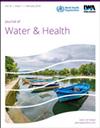A chemometric and ingestion hazard prediction study of groundwater in proximity of the Bandhwari landfill site, Gurugram, India
IF 2.5
4区 环境科学与生态学
Q3 ENVIRONMENTAL SCIENCES
引用次数: 0
Abstract
Groundwater contamination due to the leaching of harmful pollutants such as heavy metals, xenobiotic compounds, and other inorganic compounds from solid waste dumping sites has become a major health concern in recent times. Therefore, to assess the effects of the Bandhwari landfill site, groundwater samples from the surrounding region of the dumping site were collected and analyzed for heavy metals and physicochemical properties. The total dissolved solids (TDS) of 67% of samples exceeded the Bureau of Indian Standards (BIS) permissible limits which makes it unfit for drinking purposes. The groundwater samples were also analyzed for iron (Fe), lead (Pb), zinc (Zn), nickel (Ni), copper (Cu), cadmium (Cd), and chromium (Cr) concentrations and results of heavy metal concentration in the groundwater around the Bandhwari landfill follow the concentration trend of Pb > Cd > Ni > Cu > Zn > Fe > Cr. Risk assessment of consumers' health was done using target hazard quotient calculations which were less than unity (threshold value of <1), indicating that heavy metal concentrations do not pose any serious health effect according to total hazard quotient values. The results of the study made it evident that groundwater is not suitable for drinking purposes due to excess values of water quality parameters but poses no risk due to studied metal concentrations.印度古鲁格拉姆 Bandhwari 垃圾填埋场附近地下水的化学计量和摄入危害预测研究
近年来,固体废物倾倒场沥滤有害污染物(如重金属、异生物化合物和其他无机化合物)造成的地下水污染已成为一个重大的健康问题。因此,为了评估 Bandhwari 垃圾填埋场的影响,我们收集了垃圾场周边地区的地下水样本,并对其进行了重金属和理化性质分析。67% 的样本的总溶解固体 (TDS) 超过了印度标准局 (BIS) 允许的限度,因此不适合饮用。还对地下水样本中的铁(Fe)、铅(Pb)、锌(Zn)、镍(Ni)、铜(Cu)、镉(Cd)和铬(Cr)浓度进行了分析,Bandhwari 垃圾填埋场周围地下水中重金属浓度的变化趋势为:Pb > Cd > Ni > Cu > Zn > Fe > Cr。消费者健康风险评估采用目标危害商数计算法,结果小于统一值(阈值小于 1),表明根据总危害商数值,重金属浓度不会对健康造成任何严重影响。研究结果表明,由于水质参数值过高,地下水不适合饮用,但研究的金属浓度不会造成风险。
本文章由计算机程序翻译,如有差异,请以英文原文为准。
求助全文
约1分钟内获得全文
求助全文
来源期刊

Journal of water and health
环境科学-环境科学
CiteScore
3.60
自引率
8.70%
发文量
110
审稿时长
18-36 weeks
期刊介绍:
Journal of Water and Health is a peer-reviewed journal devoted to the dissemination of information on the health implications and control of waterborne microorganisms and chemical substances in the broadest sense for developing and developed countries worldwide. This is to include microbial toxins, chemical quality and the aesthetic qualities of water.
 求助内容:
求助内容: 应助结果提醒方式:
应助结果提醒方式:


